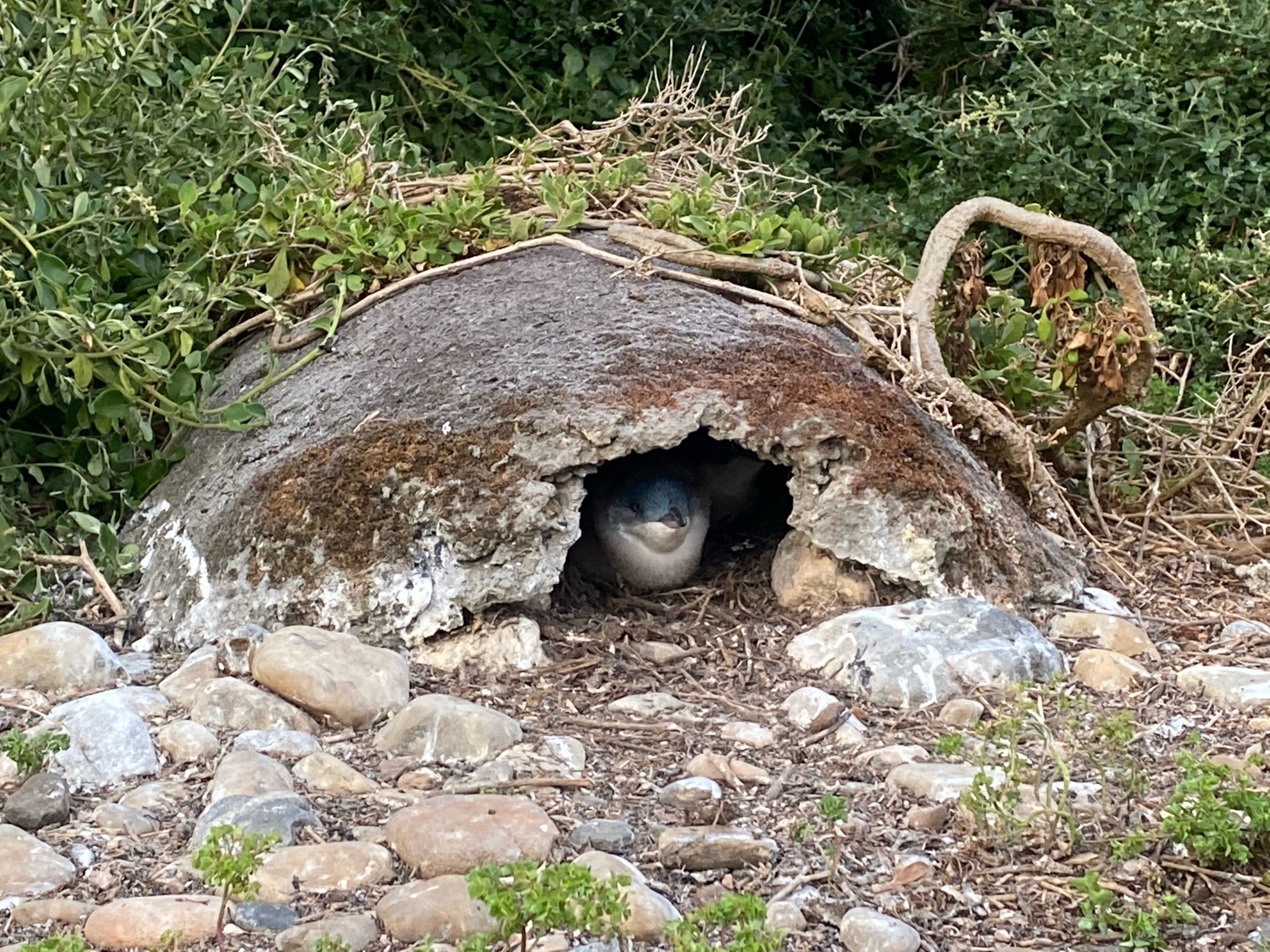Many of our birds and mammals rely on tree hollows for nesting, but because we've cleared most of our big, old trees, these hollows are in short supply. Artificial habitats are now needed in our landscapes to provide alternative shelters for threatened species and support ecosystem restoration. Nesting boxes, Bandicoot bunkers and Penguin burrows are 3 examples of artificial habitats that can support Tasmanian wildlife and environments.

Photo: The Parrots, the Pardalote and the Possum project- ABC
Nesting boxes
Many of our native birds and arboreal mammals rely on tree hollows for nesting. In fact, many ground dwelling mammals and even some reptiles also rely on these habitats. Large, old trees provide spaces where these animals may nest, rest and raise offspring. Unfortunately due to deforestation and logging these habitats are being threatened. Nesting boxes provide a great alternative.

Key Considerations
It is important to consider the specific needs of the animal when creating and installing nesting boxes. These can include tree species requirements, natural distribution (ie. make sure that species lives where you are setting up a box), location of box on tree (height, which way is it facing etc.) and proximity to food and water.
Other things to consider for your nesting box are the materials used; sustainability and durability (consider using marine-ply instead of pine), toxicity of paints used, especially if your box is for an animal that preens themselves a lot (eg. microbats).
Avoiding feral species moving in. You may want to consider how to stop unwanted species getting in the box. Some of these animals are possums, noisy minors, starlings and sugar gliders (especially if your box is for swift parrots!).
Cleaning and monitoring.
Example Species
Nesting Boxes Reading Room
Nest Box Tales - Provides more great information on how we can improve habitat for native species using nesting boxes including nest box designs, materials, installation, monitoring, predators, competitors and more
Designing Nest Boxes - Some information on nest box design and handy hints on failures and success!
Nest Boxes for Birds - Nosing boxes for native birds
Nest Boxes for Microbats - Building nesting boxes for Microbats
Bandicoot bunkers
This involves the planting out of native grasses, shrubs and trees to maintain and extend habitat area for Bandicoots. Whilst this habitat is not artificial in the same way as a nesting box, it is a great example of habitat rehabilitation and restoration. Bandicoot bunkers aim to support local ecosystems and increase Bandicoot numbers (which in turn helps Wedge-tailed eagle population as it means more food for them!)

Image: Bandicoot Bunkers with Rose Bay High
Bandicoot Bunkers Reading Room
Eastern Barred Bandicoot - Some information on the Eastern Barred Bandicoot, endemic to South Eastern Australia and endangered
Bandicoot Bungalow - Some information on making your own Bandicoot habitat for these cute little marsupials!
Bandicoots in Backyards - How to protect bandicoots from household pets such as dogs and cats in your backyard
All About Bandicoots - Some more great information on bandicoots, bandicoot species, environment, threats and how to support Bandicoot habitat and population
Penguin burrows
Burrow making can support little penguin population and restore and protect damaged coastlines. Severe weather events can cause coastal erosion which may threaten and destroy penguin habitat, resulting in penguins competing for limited burrowing sites. Artificial burrows can be made from "tuffa" - a mix of cement, sand and bark and provide more nesting sites in optimal areas, as well as provide future proofing against climate change.

Penguin Burrows Reading Room
Guidelines for Works in areas of Little Penguin Habitat - information to help land managers and community groups to adopt best practice for managing works in areas of Little Penguin habitat, from the EPA website. Including: life cycle of penguins, planning, timing of works, vegetation types and revegetation, use of chemical, penguin fencing, public works and maintenance.
Little Penguin - Some information about Little Penguins
Design for Nature - Information about Little Penguins and rising temperatures on Phillip Island
Case Studies - Landcare and Artificial Habitats
Nesting Boxes at Seven Mile Beach - On the 30th May 2021 we got together with Seven Mile Beach Coastcare to construct and renovate nesting boxes to provide vital habitat for eastern Rosellas and microbats.
Bandicoot Bunkers with Rose Bay High - On Tuesday the 1st of June we got together with 25 students from Rose Bay High to plant some bandicoot habitat
Penguin Habitat Reveg - Cooee-Camdale Coastcare undertook weeding and revegetation opposite Young’s Veg Shed to provide more habitat for our local penguins
Burrow Making Workshop - Cooee-Camdale Coastcare held burrow making workshops at the TasTAFE campus, Burnie. These burrows were used to provide more nesting sites in an area that the group did some revegetation work on
Monitoring
Monitoring and Data Collection - Here is a link to some information and tips for monitoring and data collection!
Other resources
Tree Hollows in Tasmania - A guide to all things tree hollow
Bee Hotels - Some information on bee hotels and how to build them.


